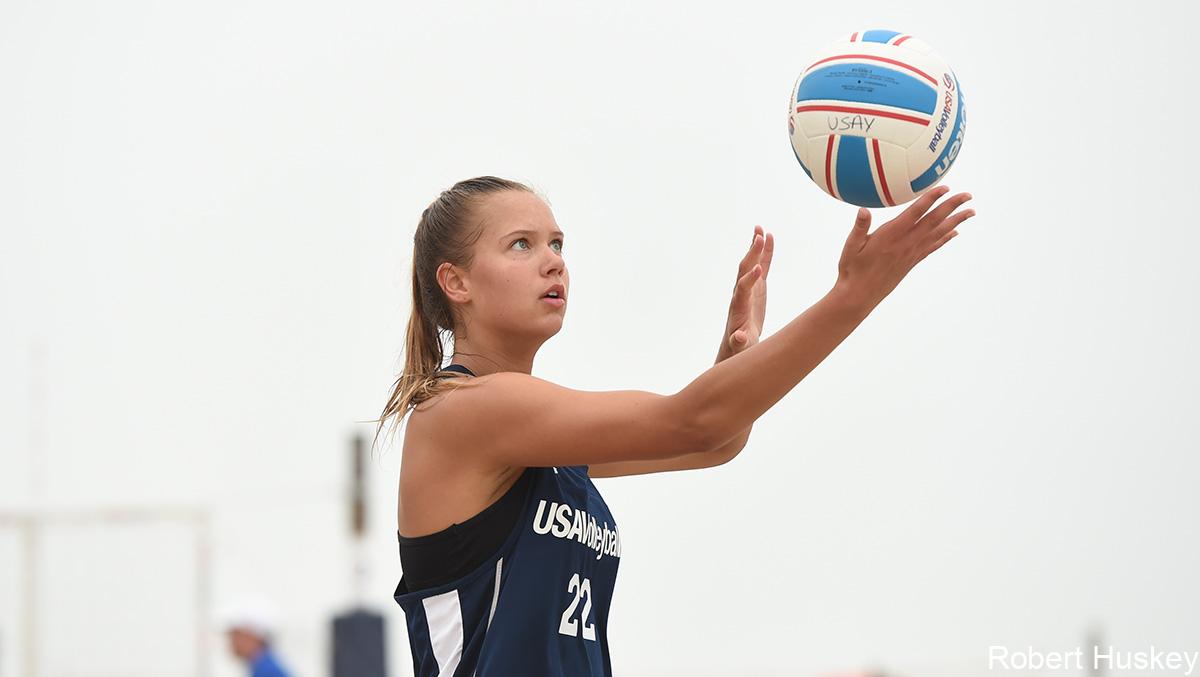
A great speaker tells a story about the time before he became a great speaker. He would feel nervous and unsure of himself before an audience of people of power and dignity. So he would overcome this by imagining them sitting before him dressed only in their underwear. Then, chuckling to himself, he would proceed to impress them with his confidence and intensity.
There is a lesson in this for service. Your audience is already waiting in underwear. Unlike those waiting to hear a speech, which they can listen to or not, your six must respond when you address the ball. Never forget, they are the ones to be tense, not you.
The serve is the only play completely in the control of one player, you. You are not responding to anything but the referee’s whistle; you can impose your will on your opponents. One of the easiest points in volleyball is the un-returned serve. You can’t ace every time, but you can serve tough and in every time; strive for 100 percent consistency.
In Practice and Competition, You Should:
Try to serve from the same routine spot or two. Whether deep, short or both, these consistent spots will help your accuracy. In addition, look the same with every serve, regardless of its intended target. The fewer clues you give them as to your target, the better. It does not hurt to examine your opponents like bugs on a pin. This will let them know you are in control and intend to search out their weaknesses.
Make a decision about each serve. Your targets will always be the open areas of the court, never serve to a person. Serve where they aren’t, not where they are, and keep it in. In practice, this may sometimes force you to use your imagination should no service receivers or pattern be found on the other side of the court.
The direction of the serve should incorporate such factors as a weak receiver, any substitute, any player upset over the last play (missed the last pass, spiked out or blocked, arguing with the team or referees) and large open areas caused by incorrect or different patterns of reception.
Make every ball tough and good. This means to serve every ball without spin so that it will “float.” You can coach yourself on every ball you serve; if it’s not spinning, great; if it is spinning, how do you contact the next one different so that it won’t spin? A low, consistent, non-spinning toss is important in aiding your ability to serve a ball that will float consistently.
The goal is to make both the ball and the receiver move. The only exception to this non-spinning ball serve is one that you purposefully spin. Spin serves can be tough, but they follow a predictable line of flight. Everyone should have a tough floater, with its unpredictable breaks and movements.
In the match, you can take a chance any time the coach says or when you are leading and the team seems to be stuck in a non-scoring rut. There are times, however, that you absolutely must serve in. The 100 percent serve rules are:
- Your first serve of the game, especially if it’s the team’s first serve
- After any timeout. Gather your thoughts and put it in.
- When the teammate before you in rotation made a service error
- After winning a long rally
- After any block for a point
- Game point, either way
There are other guidelines for times you should make sure your serve goes in. They include:
- Any time you have fallen more than three points behind
- Any time either team is within three points of winning the game
- After scoring three consecutive points
- After the opponents have scored two or more points in a row
If you find yourself a bit nervous or unsure and it is a time for a 100 percent serve, try just serving a good floater right into the middle of the court. Such a serve hits the seam of the two back row players, goes over the head of the center receiver (if there is one), and as long as you get it to float, will be tough enough and far better than a service error! Be consistent in preparation, make the ball and the receiver move, you are in control.
-With thanks to R.M. Bell, Vancouver, Canada

